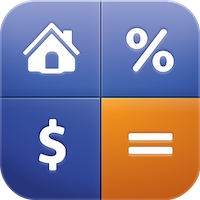What you need to know about Mortgage Rates
For homeowners or those looking to buy their first home, mortgage rates are perhaps one of the most critical mechanisms of home purchasing. With long reaching financial implications, it's essential to fully arm yourself with as much knowledge about how mortgage rates work, what determines their rate and the influencing factors that change them. With this knowledge it puts you in a far stronger position to make decisions by clearly understanding the forces that impact rates.
Trying to predict mortgage rates
One of the biggest misconceptions is that mortgage rates should follow and equal the Federal Reserve's benchmark interest rate - in fact due to the intricate nature of the markets the opposite is actually far more likely. The market conditions that are good for the Federal Reserve are often not so favorable for mortgage borrowers. It's important to understand the function, and differences, of the two rates. The Federal Reserve has a far shorter-term outlook whereas mortgage rates are based on a much longer economic outlook - the most commonly held US mortgage is a 30-year term loan and requires a far deeper analysis. Far more accurate is to follow the 10-year United States Treasury note as a predictor of the movement of mortgage rates.
The economy and mortgage rates
There is no clear formula that determines mortgage rates; in fact very few financial products have so many factors that can influence them and to understand them you have to understand the secondary market where mortgages are bought and sold.
Mortgages are bought and sold on as securities that for all purposes operate like bonds. This is what powers the mortgage market and without this secondary market mortgages would be far harder to secure for consumers. Your lender does not set your mortgage rate, rather it is set by the rates at which investors on the secondary market are prepared to buy.
When the economy is performing strongly, investors are more likely to diversify away from the relative safety of bonds therefore to continue to attract investors, lenders offer higher yields on mortgage bonds which in turn means an increase in mortgage rates - likewise a downturn in the economy makes mortgage bonds a high demand product for investors therefore lowering the yield demanded and in turn mortgage rates. It's a classic economic example of simple supply and demand, but with many moving parts.
It's essential to not only closely monitor mortgage rates but to understand the bigger picture that controls the market. While nobody can accurately predict market movements, knowledge holds the key to making informed decisions that can closely follow market trends, potentially saving you thousands over the life of your mortgage. | 
